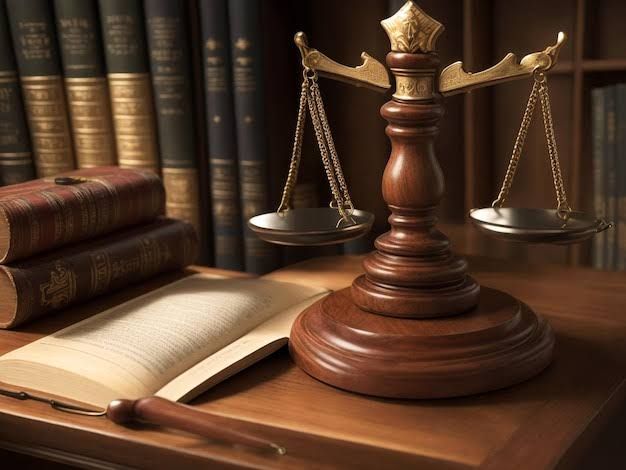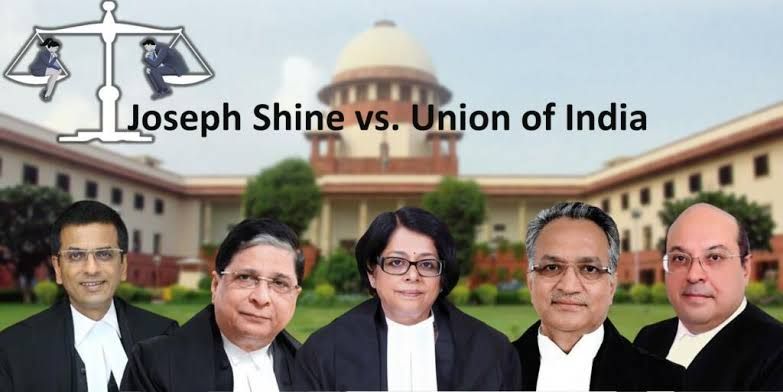By SAURAV YADAV
FACT OF THE CASE
Background:
- 1990: Three brothers (B1, B2, B3) mortgaged their property for 20 years (1900 to 1920).
- Contract Terms: After 20 years, the property was to be returned to the brothers’ family.
- Family Structure:
- B1 and B2 were married to W1 and W2, respectively. B3 was unmarried.
- The three brothers had a sister (S) who had two children and three grandsons (Gr1, Gr2, Gr3).
After the Death of the brothers and Sister:
- The only living members were the two wives (W1 and W2) and the grandsons.
- Law:
- The wives (W1 and W2) would hold the property until their deaths.
- After the wives’ deaths, the property would go to the grandsons as follows:
- Gr1: ½ share
- Gr2: ¼ share
- Gr3: ¼ share
ISSUE:
- The grandsons transferred the property to a third party (T) by misrepresenting that they were the owners.
- W2 filed a case against the grandsons since she was still alive and holding the property.
LEGAL PROCEEDINGS:
- First Appeal: The court sided with W2, dismissing the grandsons’ transfer. However, the transfer to T remained valid under Section 43 of the Transfer of Property Act, 1882, because of the promise made earlier.
Subsequent Events:
- Before the Second Appeal: W2 died, and the property went to the grandsons.
- Transferee (T) Claim: T claimed the property based on the consideration (payment) behind the transfer.
- New Party Involvement:
- Jumma Masjid: Claimed the property was gifted to them by W2.
- Gr1: Gave his ½ share to Jumma Masjid for ₹300.
LEGAL POINTS:
- Section 6(a) of the Transfer of Property Act, 1882: Generally, does not allow the transfer of property under certain conditions.
- Section 43 of the Transfer of Property Act, 1882: Allows transfer if there was a promise or representation made earlier.
Facts in summary
- Three brothers mortgaged their property for 20 years, with the agreement that it would return to their family after this period.
- The property was held by the surviving wives (W1 and W2) after the brothers died.
- The grandsons falsely transferred the property to T while W2 was still alive.
- W2 filed a case, and the court supported her, dismissing the grandsons’ transfer but keeping the transfer to T valid under Section 43.
- After W2’s death, the grandsons inherited the property, but T claimed it based on previous consideration.
- Jumma Masjid also claimed the property, stating W2 had gifted it to them, and Gr1 sold his share to them for ₹300.
CONTENTIONS OF THE PARTIES:
This case involves two main contentions:
- Claim of the Transferee (T):
- Ground: Estoppel
- Argument: The transferee (T) claims their share of the property based on the principle of estoppel. According to Indian law, estoppel prevents a party from denying the truth of a statement they have previously made if another party has relied upon that statement.
- Claim Of Jumma Masjid:
- Grounds:
- Gift Deed and Consideration: Jumma Masjid claims ownership based on a gift deed received from W2 and the ½ share of the property purchased from Gr1 for ₹300.
- Spes Succession: Jumma Masjid argues that the grandsons were heirs under spes succession (Section 6(a) of the Transfer of Property Act, 1882), which means they were not eligible to transfer the property until it was rightfully theirs. This implies that the initial transfer by the grandsons was invalid due to fraud and misrepresentation.
- Argument: Jumma Masjid contends that since the grandsons’ transfer was based on fraud and misrepresentation, it should be declared invalid, and their own claims based on the gift deed and purchase should be upheld.
- Grounds:
OBSERVATION OF THE COURT:
- Transferee’s Claim: The court observed that the transferee’s (T) claim was valid and upheld it.
- Dismissal of Jumma Masjid’s Claim: The court dismissed the claim of Jumma Masjid.
JUDGMENT:
- Rule of Estoppel: The court emphasized that the rule of estoppel, which is an evidentiary principle, took precedence over Section 6(a) of the Transfer of Property Act, 1882, which is substantive law.
- Non-Combination of Grounds: The court stated that combining both grounds (estoppel and spes succession) would undermine the purpose of the doctrine.
OUTCOME:
- Transferee T’s Claim Valid: The transferee T was awarded the property as their claim was considered valid by the court.
- Spes Succession Clarity: The court clarified that considering Jumma Masjid’s claim would render the provision of spes succession vague and undermine the dignity of the right to transfer.
PRECEDENT JUDGMENTS REFERRED BY THE COURT
- Comparison of English and Indian Law on Estoppel:
- English Law: In English law, if an individual transfers property they do not yet own, once they acquire the property, it automatically transfers to the transferee without any further claim needed from the transferee.
- Indian Law: In contrast, Indian law requires the transferee to make a claim to obtain the property under the ground of estoppel. Since transferee T had already claimed the transfer, their claim could not be ignored.
- Precedent Case: Alamanaya Kunigari Nabi Sab v. Murukuti Papiah:
- Key Judgment: This case held that if the transferee acted on the transferor’s representation of spes succession, the doctrine of estoppel would support the transferee’s right to acquire the property.
- Application to Current Case: The court referred to this judgment as a precedent, affirming that transferee T’s claim was valid under the doctrine of estoppel since they acted on the transferor’s representation.
CONCLUSION
In complex property cases like this, where legal grounds are limited, it’s crucial to focus on several key aspects to secure a favorable court decision. Timing and validity of petitions are paramount. The facts of the case must be meticulously analyzed to raise effective grounds for appeal. Even a seemingly minor action can dramatically influence the case’s outcome.
For instance, in this case, if the transferee (T) had not claimed his transfer of property, Jumma Masjid could have successfully argued their case. Jumma Masjid’s claim was based on a gift deed and a purchase of half the property share from Gr1. However, the court ruled in favor of the transferee, T, under the doctrine of estoppel, because T had acted on the transferor’s representation and claimed the property.
The court observed that combining the rule of estoppel with Section 6(a) would undermine the doctrine’s purpose. This judgment highlighted the importance of evidentiary rules (estoppel) over substantive law (Section 6a) in this context. It was also emphasized that accepting Jumma Masjid’s claim would render the spes succession provision vague and diminish the right to transfer.
The precedent judgment in Alamanaya Kunigari Nabi Sab v. Murukuti Papiah reinforced this decision. It established that if a transferee acted on a transferor’s representation, the doctrine of estoppel supports their claim to the property.
Ultimately, this case underscores the need for precise and timely legal actions. In appeals, every detail matters. A minor lapse can lead to significant changes, highlighting the importance of thorough fact analysis and strategic argumentation to influence the court’s decision favorably.
FAQ on the Case: Jumma Masjid Mercara v. Kodi Maniandra Devia
1. What was the background of the case?
- In 1990, three brothers (B1, B2, B3) mortgaged their property for 20 years (1900-1920). The contract specified that after this period, the property would return to their family. B1 and B2 were married (to W1 and W2, respectively), and B3 was unmarried. They had a sister (S) with two children and three grandsons (Gr1, Gr2, Gr3).
2. What happened after the brothers and sister died?
- The only living family members were the two wives (W1 and W2) and the grandsons. According to the law, the wives would hold the property until their deaths. After their deaths, the property would go to the grandsons with the following shares: Gr1 (½), Gr2 (¼), Gr3 (¼).
3. What was the main issue in the case?
- The grandsons transferred the property to a third party (T) by misrepresenting that they were the owners. W2 filed a case against the grandsons because she was still alive and holding the property.
4. What were the court’s observations in the first appeal?
- The court sided with W2, dismissing the grandsons’ transfer but maintaining the transfer to T valid under Section 43 of the Transfer of Property Act, 1882.
5. What subsequent events occurred before the second appeal?
- W2 died, and the property went to the grandsons. The transferee (T) claimed the property based on the consideration behind the transfer. Jumma Masjid also entered the scene, claiming the property through a gift deed from W2 and a share purchased from Gr1 for ₹300.
6. What were the main contentions of the parties?
- Transferee (T): Claimed the property based on estoppel, which prevents a party from denying the truth of a previous statement if another party relied on it.
- Jumma Masjid: Argued ownership based on a gift deed from W2 and the share bought from Gr1. They also contended that the grandsons’ transfer was invalid due to fraud and misrepresentation, as they were heirs under spes succession (Section 6(a)) and not eligible to transfer the property.
7. What did the court ultimately decide?
- The court upheld the transferee’s (T) claim, validating it under the doctrine of estoppel, and dismissed Jumma Masjid’s claim. The judgment emphasized that combining estoppel with Section 6(a) would undermine the doctrine’s purpose.
8. What precedent did the court refer to in its judgment?
- The court referred to the case of Alamanaya Kunigari Nabi Sab v. Murukuti Papiah, which held that if a transferee acted on the transferor’s representation of spes succession, the doctrine of estoppel supports the transferee’s right to acquire the property.
9. What was the significance of the court’s judgment?
- The judgment highlighted the importance of evidentiary rules (estoppel) over substantive law (Section 6a) in this context. It clarified that accepting Jumma Masjid’s claim would render the spes succession provision vague and diminish the right to transfer.
10. What does this case underscore about legal actions and appeals?
- The case underscores the need for precise and timely legal actions. In appeals, every detail matters, and a minor lapse can lead to significant changes. Thorough fact analysis and strategic argumentation are crucial to influencing the court’s decision favorably.


